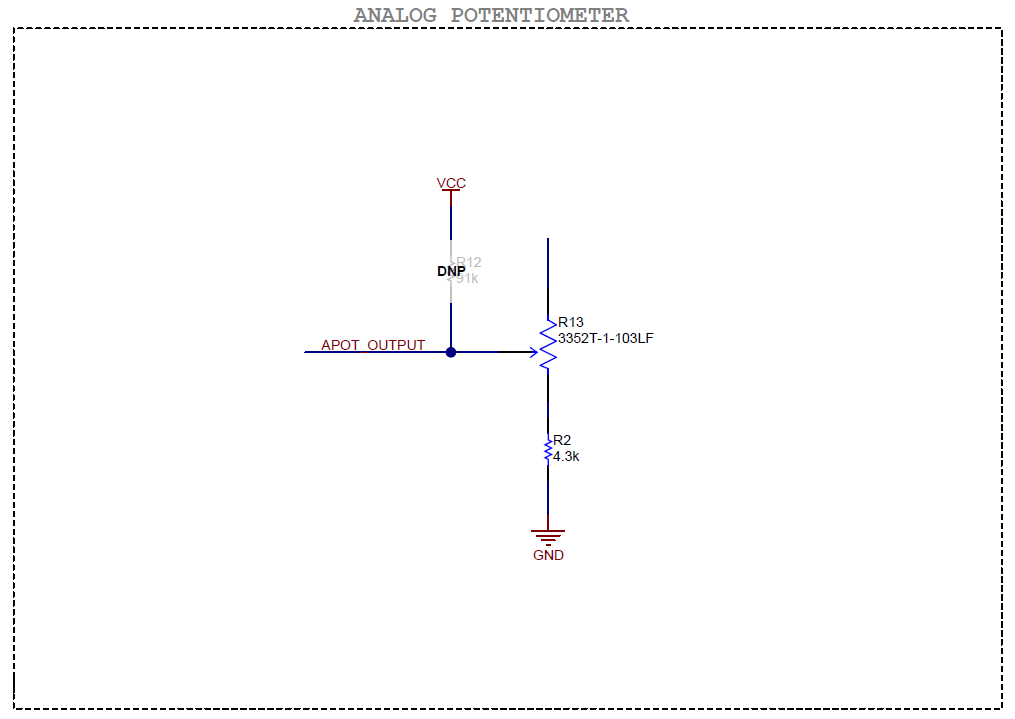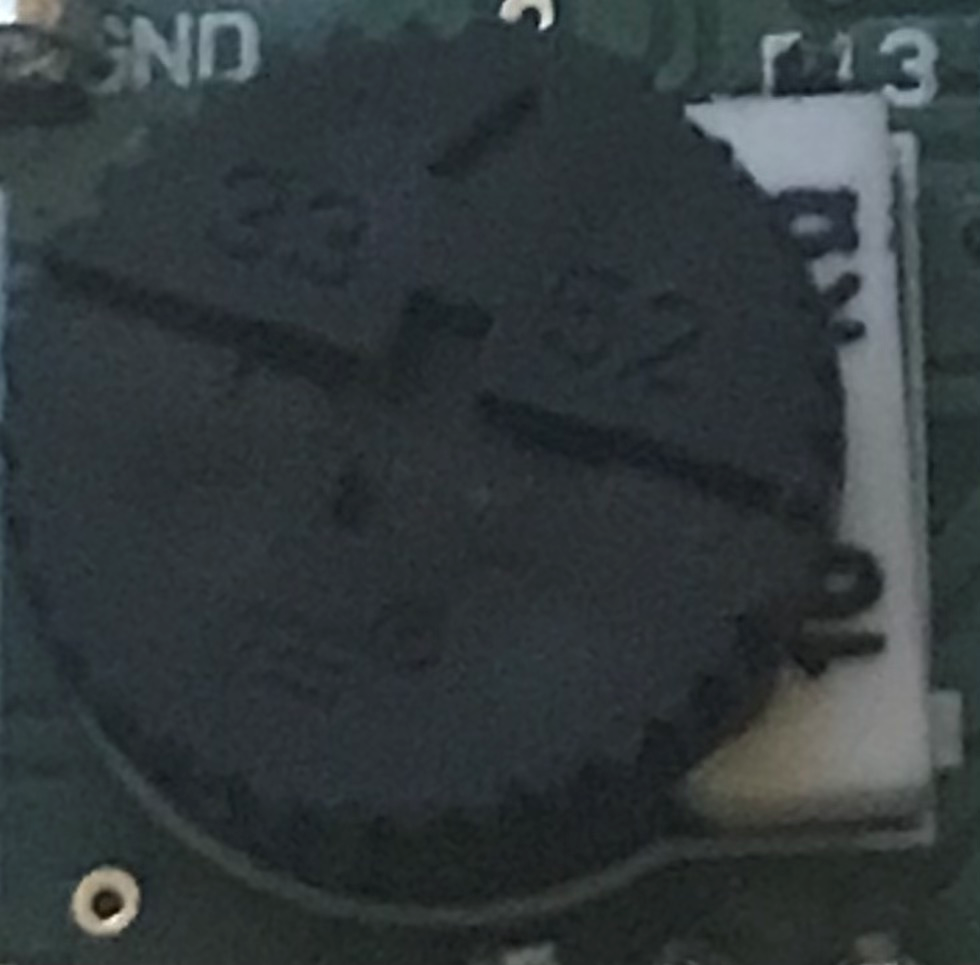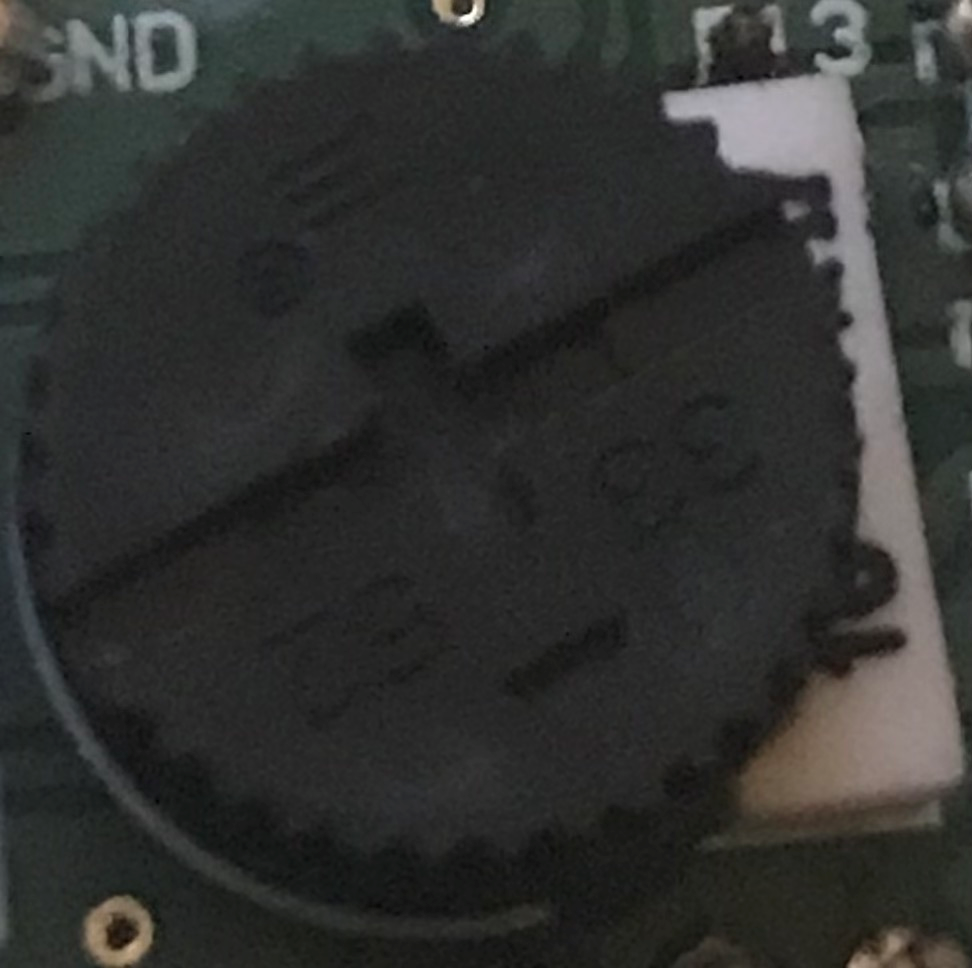SBAU376A December 2021 – March 2022 TMAG5328
- 1
- Abstract
- Trademarks
- 1Overview
- 2Kit Contents
- 3Related Documentation From Texas Instruments
- 4Hardware
- 5EVM Operation
- 6Schematics, PCB Layout, and Bill of Materials
- 7Revision History
4.1.2 Adjusting Threshold With Potentiometer
The BOP of the TMAG5328 can also be set with the analog potentiometer that is on the EVM. To select the potentiometer option for setting BOP, the potentiometer must be connected to the ADJ pin, which is done by the following steps:
- Do not populate resistor R7.
- Connect a jumper between the "APOT" (pin 3) and "ADJ" (pin 2) pins of header J3.
Use Equation 2 to translate the resistance between the ADJ and GND pins into the BOP setting:
where:
- BOP is in units of mT
- ADJ resistance is in units of kΩ
Figure 4-3 shows the schematic snippet for the potentiometer portion of the EVM. This circuit consists of a 10kΩ potentiometer (R13) in series with a 4.3kΩ fixed resistor (R2). When the potentiometer is used for setting the BOP, the ADJ pin sees a resistance equal to the sum of resistances R2 and R13. As a result, the ADJ pin can detect a resistance somewhere between 4.3kΩ to 14.3kΩ, depending on the position of the potentiometer. The 4.3kΩ to 14.3kΩ resistance range corresponds to a BOP of 4.3 mT to 14.3mT. A 10-kΩ potentiometer is used, therefore the potentiometer only simultaneously covers a 10mT range of BOP settings. The resistor R2 can be modified, however, to select which BOP options are supported. As an example, if you want to support a 2mT to 12mT range, then the user can replace R2 with a 2kΩ resistor. Similarly, if the user wants to support a 5mT to 15mT range, then replace R2 with a 5kΩ resistor.
 Figure 4-3 Schematic Snippet of
Potentiometer Portion of TMAG5328EVM
Figure 4-3 Schematic Snippet of
Potentiometer Portion of TMAG5328EVMTurning the potentiometer counterclockwise increases the resistance. Figure 4-4 and Figure 4-5 show the potentiometer positions that correspond to an ADJ resistance of 4.3kΩ and 14.3kΩ, respectively.
 Figure 4-4 Potentiometer Position for
Creating 4.3kΩ ADJ Resistance
Figure 4-4 Potentiometer Position for
Creating 4.3kΩ ADJ Resistance Figure 4-5 Potentiometer Position for
Creating 14.3kΩ ADJ Resistance
Figure 4-5 Potentiometer Position for
Creating 14.3kΩ ADJ Resistance